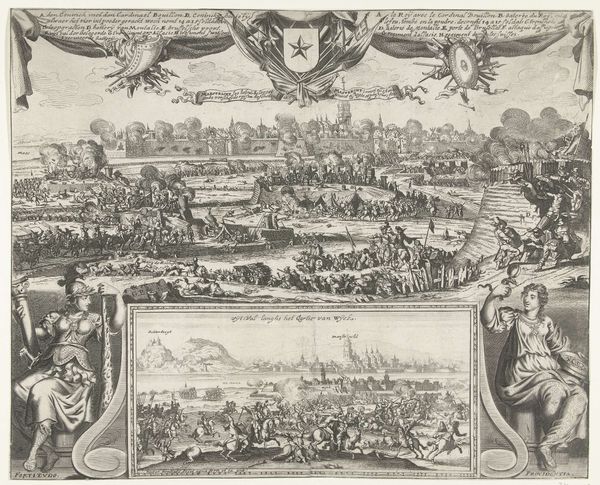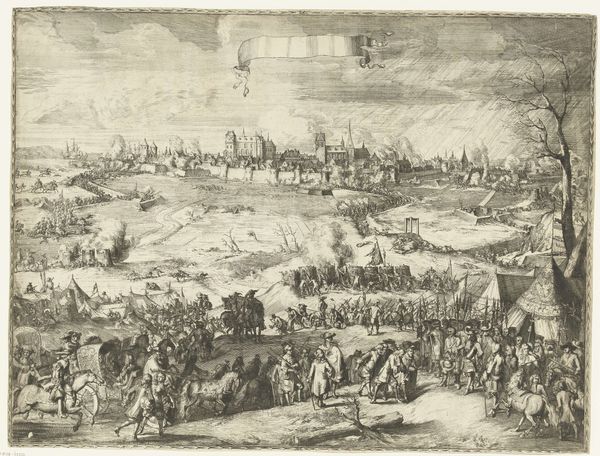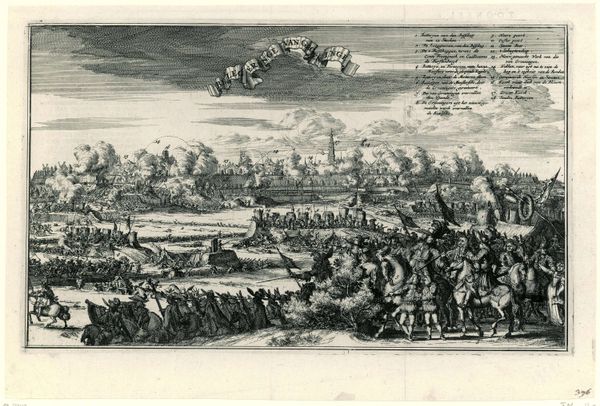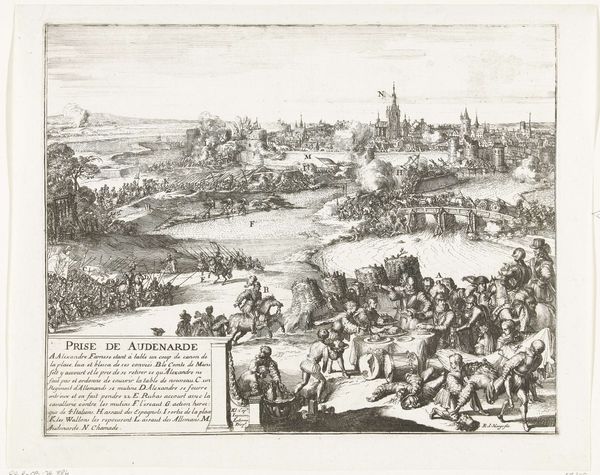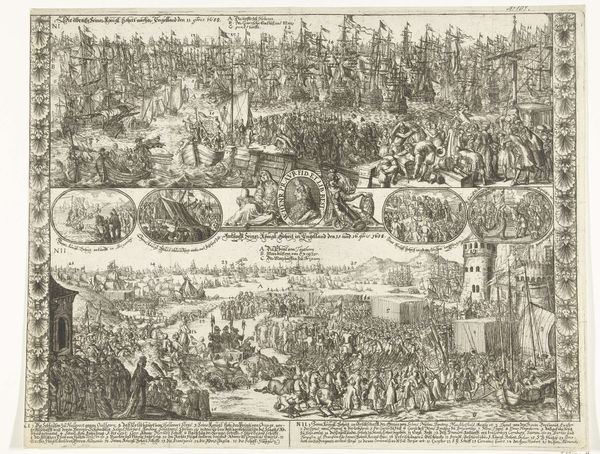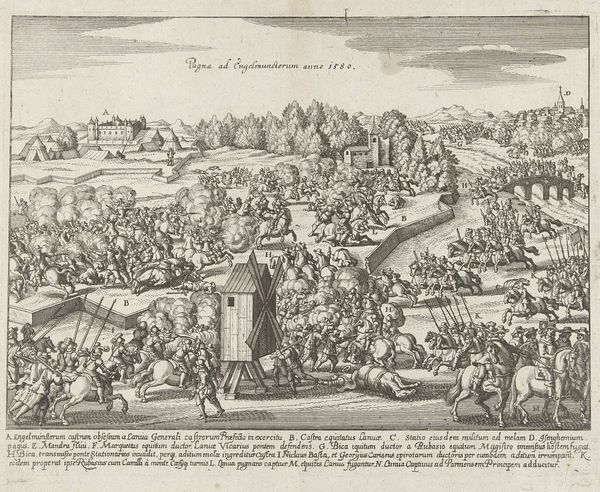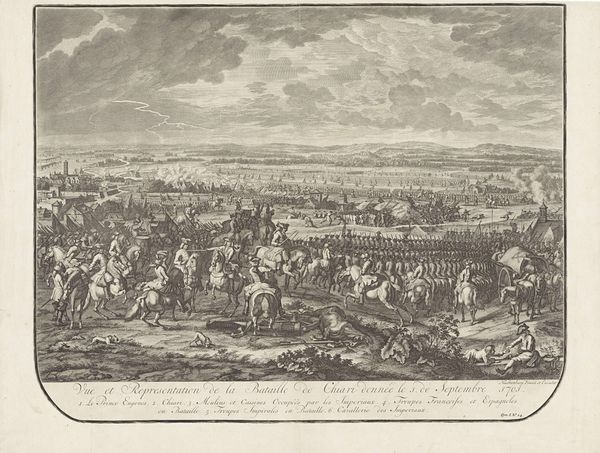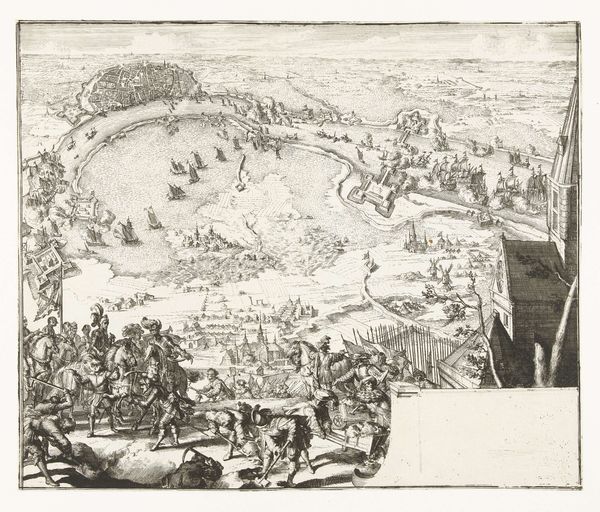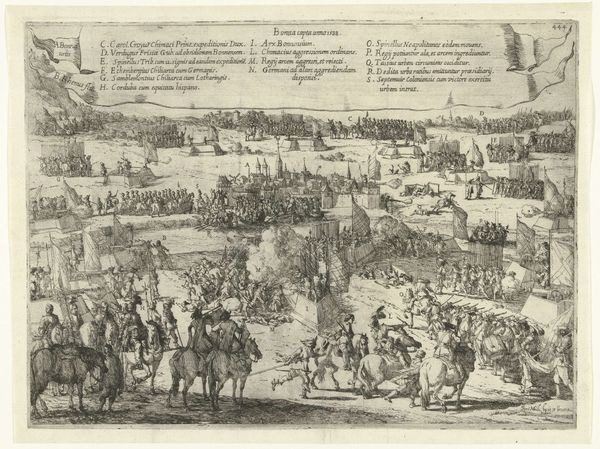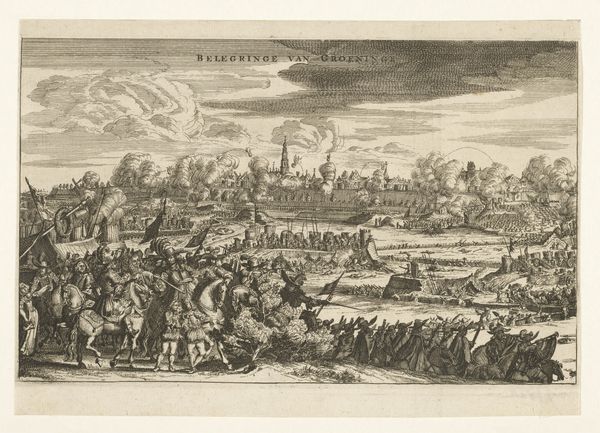
Verovering van Helsingborg (Elsenburgh) door het Zweedse leger, 1677 1677
0:00
0:00
romeyndehooghe
Rijksmuseum
print, engraving
#
baroque
# print
#
landscape
#
cityscape
#
history-painting
#
engraving
Dimensions: height 497 mm, width 684 mm
Copyright: Rijks Museum: Open Domain
Editor: Here we have "The Conquest of Helsingborg (Elsenburgh) by the Swedish Army, 1677," an engraving by Romeyn de Hooghe. It’s so detailed, it almost feels like looking at an elaborate stage production of a battle! What stands out to you about this print? Curator: It's the labour, isn't it? The sheer amount of meticulous work embedded in the engraved line itself. Think of the artist meticulously cutting into the metal plate, replicating a scene of war, a moment of extreme upheaval. That's material labour right there. And then the consumption; these prints would have been reproduced and circulated widely, solidifying a particular narrative about this conquest. How does that contrast with our contemporary modes of information dissemination? Editor: I guess it's slower, more deliberate? A single artist interpreting an event and distributing it rather than constant streams of images from multiple sources. So, the deliberate choices of the artist become key, then? Curator: Exactly! What did de Hooghe choose to represent, and more importantly, how did he represent it? Look at the elevated perspective, presenting the victors on horseback in the foreground, and ask yourself, what does it say about power structures and their material representation in the 17th century? Editor: That makes sense. He's definitely framing it from a specific perspective of authority and triumph. The details become evidence of that power, translated into a tangible object, the print. The scale too – for an engraving, it feels quite expansive. Curator: Yes! Now, considering the process of engraving and its historical usage in disseminating information, can you see parallels with contemporary forms of art? Editor: Hmmm… Perhaps street art or even digital art that’s meant to be widely shared and consumed? Both rely on accessibility and repetition to convey a message. Curator: Precisely. Understanding the means of production helps us decipher the message. It allows us to appreciate how the artist has skillfully made a commentary of power through labor, a dialogue made even more poignant when considering our own world. Editor: Right! I now see how closely linked the artistic process and its purpose truly are; thank you. Curator: And thank you. Thinking about de Hooghe's decisions really opens up questions about the cultural impact of reproducibility itself.
Comments
No comments
Be the first to comment and join the conversation on the ultimate creative platform.
